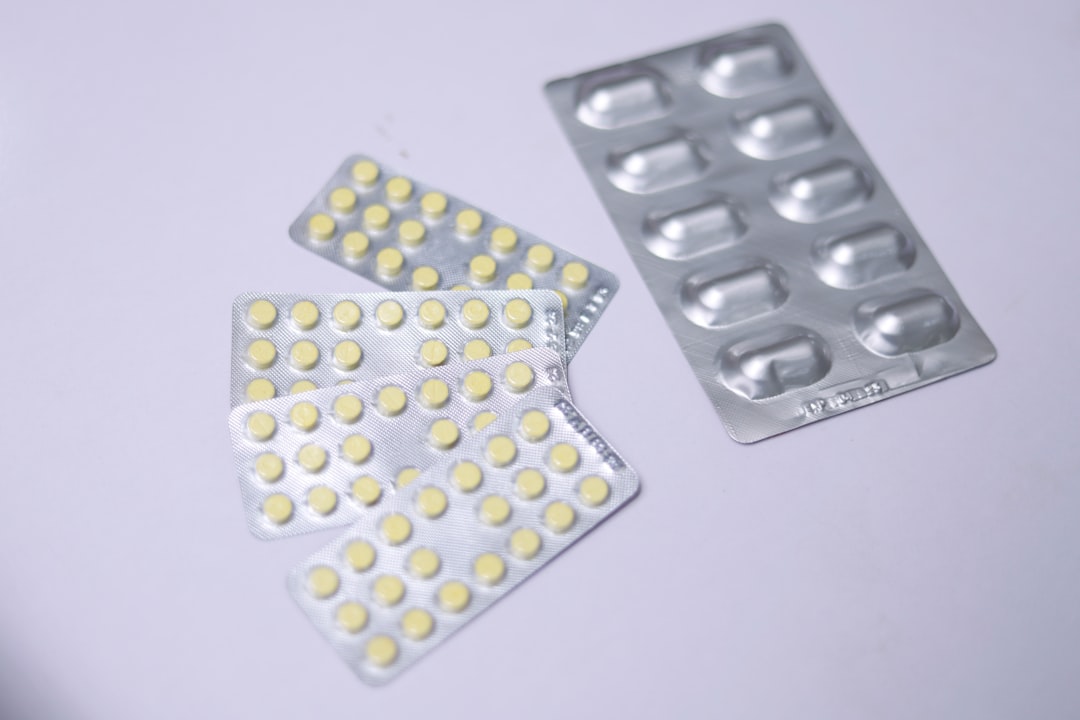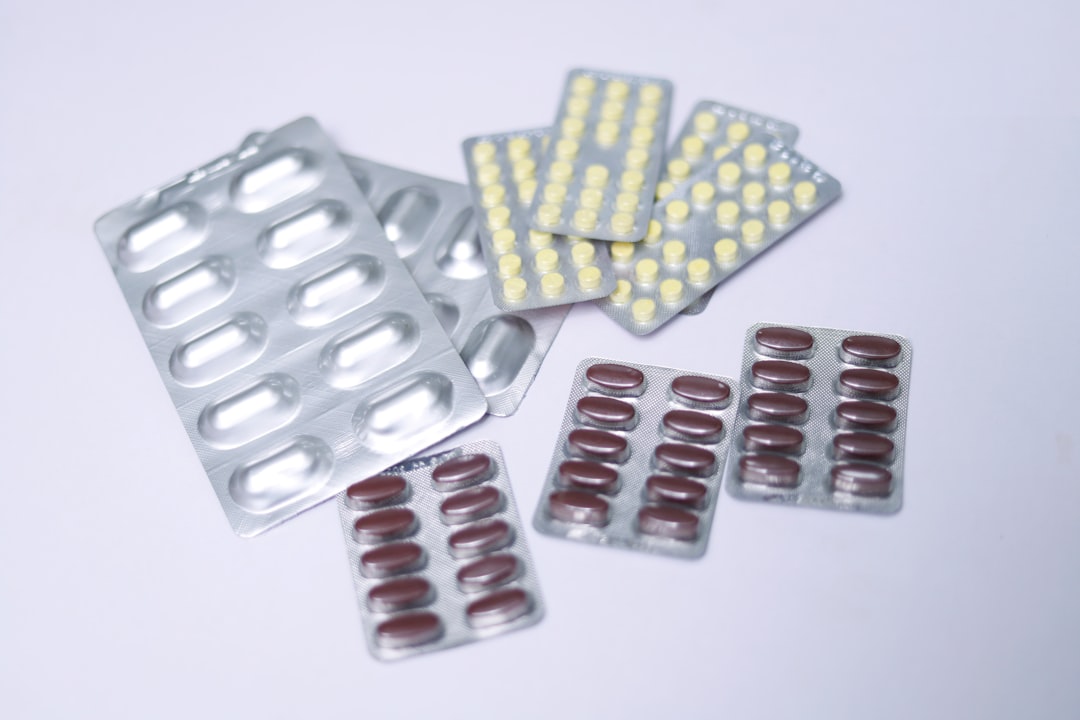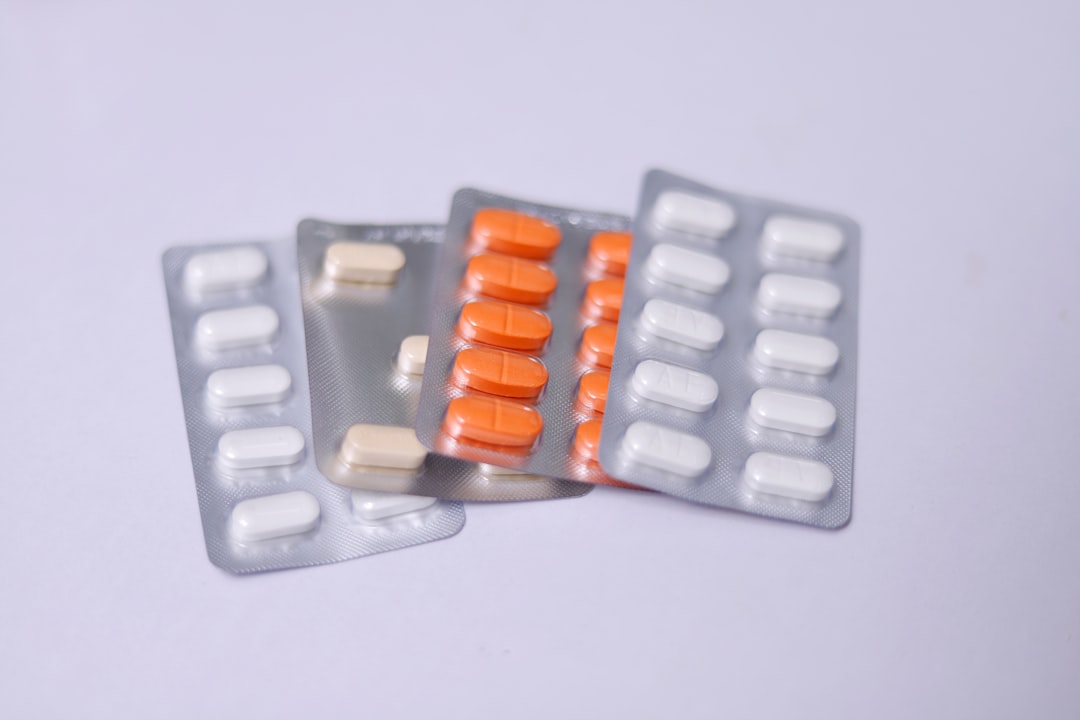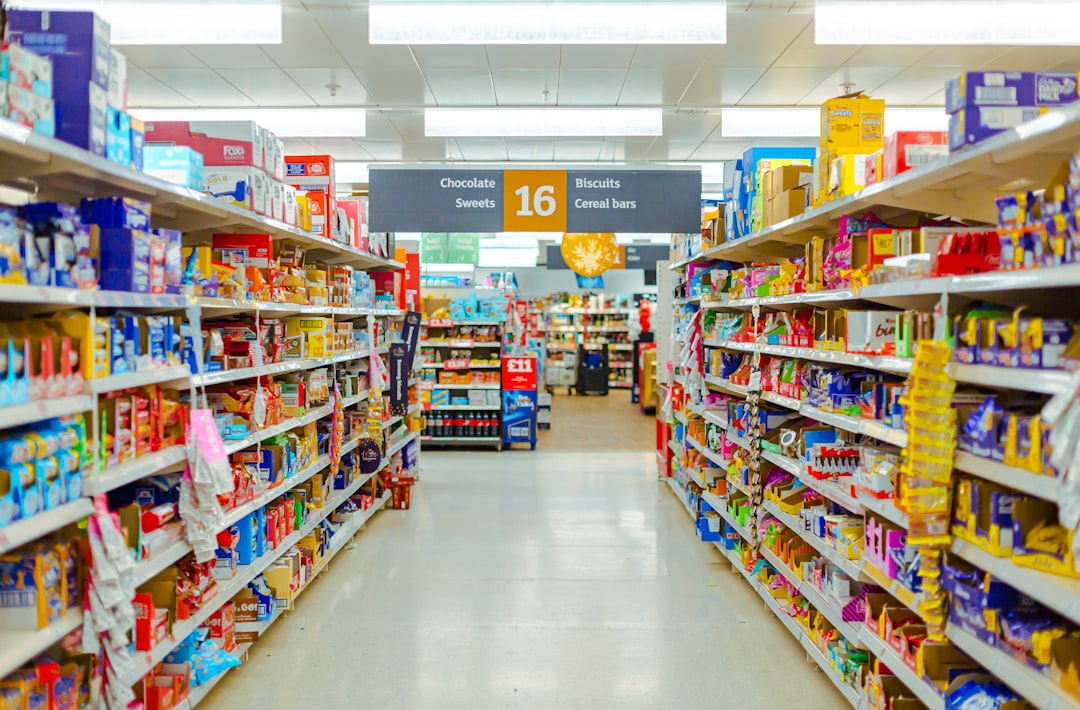

Engage prospects with a scan and streamline customer engagement with FREE QR code marketing tools by Sona – no strings attached!
Create a Free QR CodeFree consultation

No commitment

Engage prospects with a scan and streamline customer engagement with FREE QR code marketing tools by Sona – no strings attached!
Create a Free QR CodeFree consultation

No commitment
Wholesale wholesale health product suppliers face increasing complexity in customer education as the health product landscape evolves rapidly. Buyers examine authenticity, compliance, and product information before making bulk purchases, so delivering timely, credible information at every touchpoint is vital. Traditional methods like brochures or off-the-shelf catalogs often lag in providing up-to-date resources or streamlined buyer engagement, creating gaps where important prospects can slip through.
Today, digital-savvy procurement teams and retail buyers expect instant access to product data, safety certifications, regulatory documentation, and supply chain credentials. Yet many suppliers struggle to track and personalize these interactions, missing high-value prospects who research products without submitting contact forms. QR codes make these expectations attainable by enabling instant digital engagement, helping suppliers bridge the gap between physical product displays and current, verified online resources, and offering new ways to capture and act on buyer interest that previously remained invisible.
By integrating QR codes into packaging, catalogs, or trade show materials, wholesale health product suppliers can empower customers to instantly verify authenticity, access the latest compliance information, and streamline bulk order inquiries, no app download required. This strategic approach supports stronger supplier credibility, surfaces valuable engagement signals that were previously lost in traditional workflows, and enables more data-driven business decisions while aligning sales efforts with evolving B2B buyer behaviors. Solutions like Sona QR are built to support each step, from code generation to attribution. Start creating QR codes for free.

QR codes bridge the gap between traditional supplier touchpoints and real-time digital engagement, fundamentally shifting how wholesale health product suppliers inform and nurture their buyers. Suppliers often contend with fragmented information delivery: static catalogs quickly become outdated and buyers can walk away without crucial compliance documentation. Binders of safety data sheets are misplaced or ignored, and bulk buyers may leave trade shows with little incentive to re-engage without a streamlined path to digital resources.
To solve this, the most effective programs replace analog assets with dynamic, QC-approved resources and then measure what buyers actually use. When every carton, price sheet, and sample pack offers a scan-to-learn journey, education becomes continuous and measurable. Teams can retire manual processes and focus on insights: which product lines are drawing attention, what compliance files are most requested, and when a sales follow-up will add value.
Modern platforms now make it simple to manage, update, and analyze every QR code deployed. Look for features such as batch updates, CRM enrichment, granular permissions, version control, and systematic lead progression based on live buyer engagement.

Wholesale health product suppliers operate in a world of strict regulation, complex supply chains, and intensifying buyer scrutiny. Documentation is not optional: it is essential to winning deals and maintaining trust. Yet, many teams have limited visibility into who is evaluating their products, or they miss conversion opportunities because critical information is slow to reach decision-makers. QR codes address these persistent gaps with a single scan.
Another reason QR codes matter is speed. Buyers in procurement and retail are increasingly mobile, often evaluating samples in showrooms or during site visits. Moving from a brochure to live information needs to be frictionless. QR codes remove steps that cost time: manual lookups, email requests for files, or waiting for a rep to respond. When information flows instantly, deals move faster and risk is reduced.
Apply these benefits to common materials such as case packs, price sheets, appointment cards for supplier meetings, and booth displays. A single QR code on a master carton can consolidate CoA, SDS, allergen information, storage instructions, and reorder links, creating one dependable source of truth for every buyer who handles the product on product packaging.

QR codes are flexible enough to support a range of workflows in wholesale health. Selecting the right format for the job ensures your educational experience is fast and familiar for buyers. Most suppliers will benefit from a mix of formats, routed to destinations designed for the task at hand.
Dynamic QR codes are particularly useful in regulated or fast-moving environments. When ingredient disclosures, lot numbers, or certificates change, you can update the destination without generating a new code. This preserves consistency on printed assets while maintaining data accuracy.
In wholesale health supply, web link and PDF delivery formats usually carry the most weight because documentation is core to buying decisions. Dynamic codes are recommended for anything tied to compliance or pricing, while static codes can be reserved for evergreen brand materials.

Growth in wholesale health hinges on capturing interest the moment it occurs. QR codes unlock that potential by turning every physical impression into a digital pathway, creating a direct line from curiosity to clarity. When deployed thoughtfully, they expand reach, accelerate education, and convert passive readers into active buyers.
Begin by mapping your existing physical surfaces and buyer moments: trade shows, rep meetings, warehouse tours, sample deliveries, and mailers. Each of these interactions is a chance to invite a scan that continues the conversation. Tie each placement to a specific outcome: verify authenticity, review shelf-life handling, request a price quote, or schedule a technical review.

Use cases should reflect the real questions buyers ask and the obstacles they encounter as they evaluate suppliers. By meeting those needs with a quick scan, you simplify decisions and signal trust. Focus on scenarios where immediate access to verified data or a frictionless action creates value.
Start with foundational use cases that touch compliance and confidence, then layer in sales acceleration. As scan data accumulates, you can refine your campaigns and distill which assets really move the needle in each segment of your buyer base.
Every scan contains signal: which product category a buyer cares about, what context they were in, and how ready they are to progress. By deploying distinct QR codes across your funnel, you can automatically segment audiences and route them into the right follow-up sequence. This transforms anonymous interest into actionable profiles, and sets up intent-driven retargeting.
For wholesale health suppliers, high-value audiences often include retail buyers evaluating specific product lines, procurement teams comparing certifications, and distributors checking supply continuity. Treat each segment differently. If someone scanned a batch-level CoA, they warrant technical follow-up. If they scanned a general overview, nurture them with product education and case studies.
QR codes are connective tissue across your marketing stack. They translate offline attention into measurable digital engagement and unify data across channels that are often siloed in wholesale environments. By anchoring each physical asset to a consistent digital experience, you create a seamless journey and a stronger foundation for attribution powered by offline attribution.
In practice, this means coordinating messaging and destinations across print, events, and digital. A QR code on a catalog should land on a page that mirrors the catalog design and includes next steps such as downloading documentation or booking a call. A QR on booth signage should capture interest quickly with short forms and one-click content bundles, then pass the baton to your CRM with tags for event source and product interest.
A centralized platform like Sona QR lets you manage codes, monitor performance, and sync scan data with your CRM and ad accounts so your multi-channel machine operates from the same live dataset.
Start every QR campaign with structure so you can ship quickly, learn fast, and iterate confidently. This checklist gives wholesale health product suppliers a repeatable framework for launching and scaling QR-powered education and conversion programs across materials, packaging, and events.
While the steps are simple, the impact compounds when you deploy them across multiple touchpoints and maintain consistency in your content and tracking. The goal is to turn scanning into an intuitive behavior buyers come to expect from your brand.
Define the core bottleneck you want to remove. Are prospects struggling to verify ingredients, retrieve CoAs, or request pricing from the field? Start with the problem that causes the most friction for buyers or the highest cost for your team.
Select static codes for fixed, evergreen destinations and dynamic codes for anything you will want to edit, measure, or route by audience. In regulated contexts, dynamic codes are usually the safer default because documentation and certifications can change.
Make the code feel native to your brand and environment. Add your logo, brand colors, and a clear visual frame. Place a benefit-driven call to action nearby so people know what they get when they scan.
Roll out the code where your audience already engages with you. Prioritize placements that align with your growth plan and the scanning context.
Measure scans, conversions, and follow-on actions. Use analytics to identify drop-off points and determine which channels and messages drive the best outcomes.
Supplier organizations often struggle to connect offline interactions to pipeline movement. QR code platforms unify engagement tracking so teams can see what is driving attention, education, and purchasing intent. The key is not just capturing scans but tying them to outcomes: document views, meeting bookings, or RFQs that advance deals.
Why this matters is simple. Without linking scans to downstream events, you are relying on anecdote instead of insight. When you can show that a trade show signage QR drove 120 scans, 40 document downloads, 12 qualified meetings, and four purchase orders, you gain the proof needed to optimize budgets and placements.
With Sona QR and Sona.com, teams can go further. Sona QR captures the who, what, where, and when of scanning. Sona is an AI-powered marketing platform that turns first-party data into revenue through automated attribution, data activation, and workflow orchestration. See Sona’s guide to account identification. You can optimize live campaigns in real time, sync enriched data to HubSpot or Salesforce, and see which codes and assets contribute to pipeline and closed revenue.
The result is a performance engine that starts with a scan and ends with measurable impact. Instead of guessing which brochures or cartons matter, you will know, and you will scale what works.
Operational excellence and team alignment determine the long-term success of QR programs. The more your people, processes, and platforms work in sync, the more value you extract from each scan. Treat QR codes as a core capability, not a one-off experiment, and your results will compound.
Focus your efforts on placements that your buyers see daily and connect them to actions that reduce friction. A small number of high-visibility, high-value QR deployments usually outperform a scattered approach. Educate your frontline teams so they can communicate the benefit behind each scan and guide buyers to the right outcome.
QR codes give wholesale health product suppliers a practical, scalable answer to longstanding frustrations: lost opportunities, anonymous engagement, manual follow-up, and outdated documentation. By anchoring compliant, current information behind every scan and tracking how buyers engage, suppliers educate faster, sell smarter, and operate with greater confidence.
The most successful programs start where the friction is highest and the stakes are real: authenticity verification, documentation access, and event conversion. With thoughtful placement, strong calls to action, and a platform that unifies tracking and attribution, every brochure, label, and display becomes a digital entry point that moves buyers from interest to action.
Sona QR makes it simple to launch and measure these initiatives, and Sona.com ties scans to revenue outcomes. Start with a single high-impact use case, then expand as you learn. The path to better buyer education and stronger growth can begin with one well-placed code and a promise fulfilled in a single scan.
QR codes have transformed wholesale health product suppliers from traditional sales channels into dynamic, interactive customer education platforms. By integrating QR codes, suppliers can not only inform and engage customers with product benefits and usage instructions but also track interactions to optimize their educational efforts and improve customer satisfaction. Imagine providing instant access to vital health product information that boosts trust and drives repeat purchases—all while gathering data to refine your approach.
With Sona QR, you can easily create dynamic, trackable QR codes that update on the fly without costly reprints, connecting every scan directly to actionable insights and revenue growth. This means better-educated customers, stronger brand loyalty, and measurable impact on your bottom line. Start for free with Sona QR today and turn every QR code scan into a powerful step toward smarter customer education and increased sales.
QR codes enable instant digital engagement, allow buyers to verify authenticity and access up-to-date compliance information, improve tracking and personalization of buyer interactions, reduce manual processes, and support data-driven business decisions.
By placing QR codes on product labels or master cartons, buyers can quickly confirm certifications, lot provenance, and GMP status through a single scan, which builds trust and reduces counterfeit risk.
Best practices include upgrading static materials to dynamic QR-linked resources, optimizing QR code placement with clear calls to action, centralizing scan data for insights, using dynamic QR codes for real-time updates, and integrating scan data with CRM systems for better sales follow-up.
Ensure quality and safety by enabling instant access to safety data sheets, certificates of analysis, regulatory documentation, and batch-level traceability via QR codes on packaging and collateral, providing buyers with verified, current product information.
Legal considerations include providing up-to-date compliance documentation such as safety certifications, import/export records, and regulatory approvals, which can be efficiently delivered and updated through QR codes linked to live content layers.
Use Sona QR's trackable codes to improve customer acquisition and engagement today.
Create Your FREE Trackable QR Code in SecondsJoin results-focused teams combining Sona Platform automation with advanced Google Ads strategies to scale lead generation

Connect your existing CRM

Free Account Enrichment

No setup fees
No commitment required

Free consultation

Get a custom Google Ads roadmap for your business






Launch campaigns that generate qualified leads in 30 days or less.
